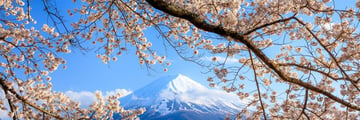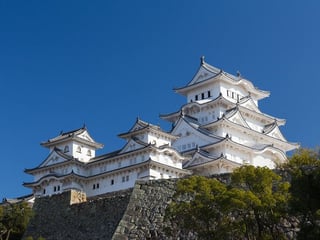Experience these festivals & events in Japan
Whenever you’re planning to visit Japan, there’s a strong chance you’ll find a celebration or festival to fit into your travel itinerary. Make sure you know what’s going on and enjoy at least one festival whilst you’re in Japan. Colourful processions, elaborate floats, dancers and musicians make these events a fun and photo-friendly occasion for all.
O-Shogatsu: New Year’s Eve in Japan (January)
The new year is rung in at midnight from the temple bells and as each bell rings, it is said to remove a bonnou ‘trouble’. Visitors to Kyoto will encounter the chimes of Chion-in temple bell, which is so big that it takes ten monks to ring it. Festivities start late, so head out for a meal and a few glasses of sake earlier in the evening. Later on, the locals will make their way to temples and shrines, where you can join them for more sake at street stalls and see them carry branches of bamboo to burn in the temple courtyards.
Seijinshiki: Coming of Age Day (January)
Seijinshiki is celebrated on the second Monday of January. The transition from teenager to adult is celebrated by young people who turned 20 in the last year. Traditional clothing is worn, with women wearing elaborate silk kimonos and fur wraps, and men sporting short, open-hanging kimono known as a haori. Main squares in towns and cities across Japan hold these special events and are a great opportunity to witness the culture and traditions of Japan.
Hanami: Cherry blossom viewing season (March/April)
Sakura is the Japanese word for cherry blossom and these wondrous pink blooms are Japan’s national flower and a symbol of hope and renewal. Spring is a great time to visit Japan and there are numerous places to see the cherry blossoms and enjoy hanami (flower viewing) season as well as take part in the festivities which usually include food and music.
Sanja Matsuri (mid to late May)
One of Tokyo’s biggest festivals, where over one hundred Mikoshi are paraded around the streets and nearly two million people visit Asakusa over the three-day festival. Wear a kimono and join in the street party to see the mikoshi - portable shrines that are vehicles for the deity. Visit food stalls and watch performances by Tokyo’s geisha, with drum and flute bands adding to the atmosphere.
Tenjin Matsuri (24-25 July)
Learn more about Osaka at one of the three greatest festivals in Japan which dates back more than 1,000 years. This fabulous boat festival is held at Osaka Tenmangu Shrine and is dedicated to the patron god of learning and art. Enjoy some traditional Japanese performing arts, with kagura music and bunraku puppet performances.
A land procession, with a parade of 3,000 people dressed in 8th-12th Century imperial-court style dress, march beside portable shrines. There is also the boat procession, where thousands board about 100 boats and sail upstream from the Tenmabashi Bridge. The finale takes place at dusk when the boats are lit with fires creating a visually impressive effect on the surface of the river surface accompanied by a fireworks display.
Obon celebrations: (August)
Buddhists believe that every year, their ancestors visit from the spirit world. Families gather and remember departed loved ones each August. Obon celebrations are accompanied by fireworks and often with colourful parades and music. Japanese people clean their houses and light chochin lanterns, laying offerings of food in front of a butsudan ‘Buddhist altar” to their ancestors’ spirits. Chochin lanterns and flower arrangements are put by the butsudan.
Koyo: (September to November)
Go for gold in Japan and time your travels so you can be there during the awesome spectacle that hits the trees with a blaze of colour each Autumn. The cherry blossoms in spring are arguably more famous, but most locals will tell you to visit later in the year.
Tea Ceremony: (Anytime, anywhere)
Take part in an elaborate tea ceremony when in Japan. Performed in the same way for centuries, the Way of Tea promotes respect, harmony and purity. The ritual ceremony of tea making was developed in Japan by Buddhist monks to encourage inner harmony and mindfulness and Japanese nobility adopted the tradition. It is usually conducted by graceful geisha at the beginning of their 5-year apprenticeship.
There are different types of tea ceremony, so you can choose to take part in a simple performance called chakai, which includes a light meal. Why not have the full experience though and try a chaji? Kaiseki, a beautifully presented meal of several courses is served with sake, but be prepared, these more formal gatherings can last up to four hours. A special room is prepared and you’re invited in to watch the gentle cleaning process of all the utensils and the preparation, followed by drinking the powdered green tea. This is a truly beautiful ceremony to take part in and should be high on your list when visiting Japan - at anytime of year, whenever you choose to travel.
More Inspiration
Recommended holidays














